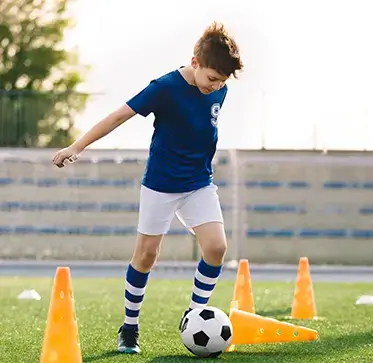CRFC BLOGS
LATEST BLOGS & NEWSLETTERS
The Importance of Agility Drills for Improving Footwork in Youth Soccer Players (U5-U19)
Soccer demands quick feet, sharp reflexes, and precise ball control. For youth soccer players, agility training is crucial in developing these skills, helping them move fast, react quickly, and maintain balance while playing. Whether a child is just starting at U5 or competing at U19, incorporating agility drills into training sessions can significantly enhance footwork, speed, and overall performance on the field.
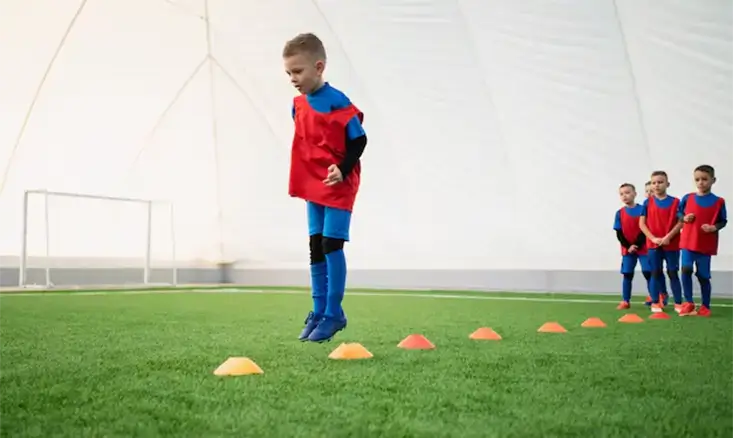
Why Agility Drills Matter in Soccer
Agility is more than just running fast—it’s about changing direction quickly while maintaining balance and control. This skill is essential in soccer, where players constantly adjust their positioning and control the ball under pressure. The following are some key benefits of agility drills for youth soccer players:
1. Enhancing Coordination and Balance
Young soccer players must develop coordination to move effectively with and without the ball. Agility drills help with the following:
- Foot-eye coordination
- Balance and body control
- Spatial awareness
2. Improving Reaction Time and Speed
Players must respond instantly to their opponents and the ball in soccer. Agility training helps with the following:
- Acceleration
- Quick changes in direction
- Instant reactions
3. Preventing Injuries
Youth soccer players are still developing physically, making them more vulnerable to injuries. Agility drills help by:
- Strengthening muscles, joints, and ligaments reduces the risk of strains and sprains.
- Teaching proper movement mechanics and preventing awkward falls.
- Improving landing techniques and reducing stress on the knees and ankles.
By incorporating agility training early, U5 to U19 players can build a strong foundation to benefit them throughout their soccer journey.
Best Agility Drills for Youth Soccer Players
The following are some of the most effective drills for youth soccer players of all ages.
1. Agility Ladder Drills
Agility ladder drills help increase foot speed, coordination, and reaction time, making them an essential part of soccer training.
- Place an agility ladder on the ground.
- Players step in and out of each box as fast as possible.
- Emphasize quick, light foot movements.
This drill helps develop quick feet and improves dribbling control with a ball.
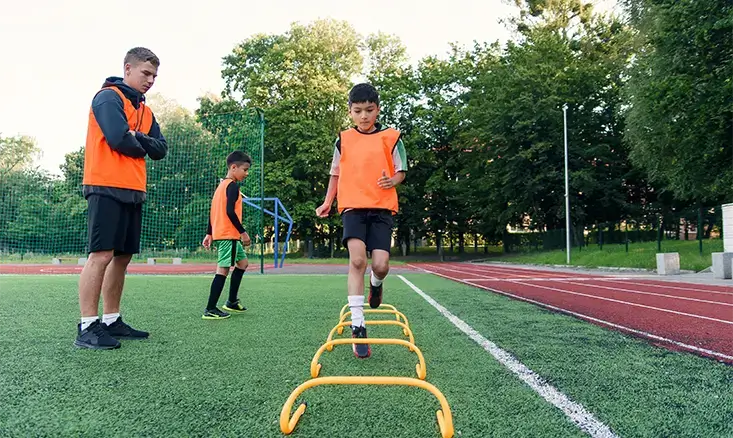
2. Cone Drills for Directional Speed
Soccer requires players to sprint in different directions. Cone drills help improve these movements.
Zig-Zag Drill
- Set up cones in a zig-zag pattern.
- Players dribble through the cones while keeping the ball close.
- Focus on quick direction changes without losing control.
This drill improves ball-handling agility, making it useful for wingers and midfielders.
T-Drill
- Set up cones in a T-shape.
- Sprint to the center, shuffle left, then right, and backpedal.
- Enhances multi-directional movement and stamina.
This drill benefits all soccer positions, improving defensive agility and attacking transitions.
3. Reaction-Based Agility Drills
These drills help players respond quickly to unpredictable situations, mimicking real-game scenarios.
Partner Shadow Drill
- One player moves in various directions.
- The second player mirrors their movements without delay.
Improves defensive reactions and one-on-one positioning.
Agility Training by Age Group
Agility training should be designed according to a player’s age and skill level. Younger players need basic coordination drills, while older players benefit from intense reaction-based exercises.
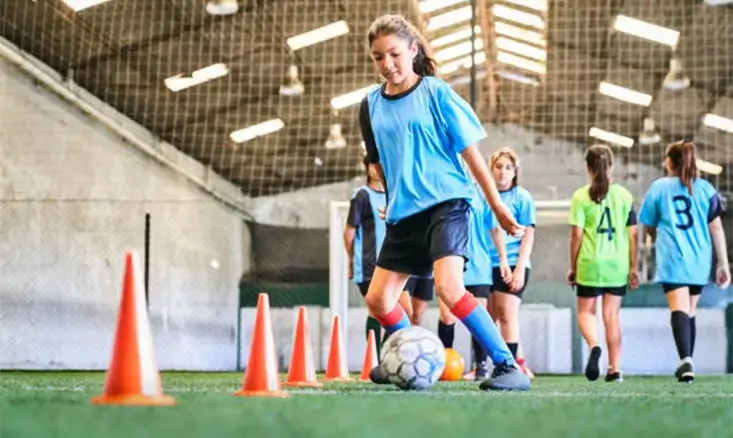
Youth Soccer Players Aged U5-U8 (Beginners)
- Focus on fundamental movement skills (running, jumping, and stopping).
- Use fun agility drills like tag, small obstacle courses, and simple relay races.
Youth Soccer Players Aged U9-U12 (Developing Players)
- Introduce structured agility drills, including cone and ladder exercises.
- Work on quick turns, changes in direction, and defensive movements.
- Begin reaction-based training, helping players read their opponent’s moves.
Youth Soccer Players Aged U13-U19 (Competitive Players)
- Increase the intensity and complexity of agility drills.
- Incorporate resistance training to build power.
- Add sport-specific drills, such as one-on-one defensive agility and attacking footwork.
As players advance in age and skill level, agility training should become more challenging to match game-like conditions.
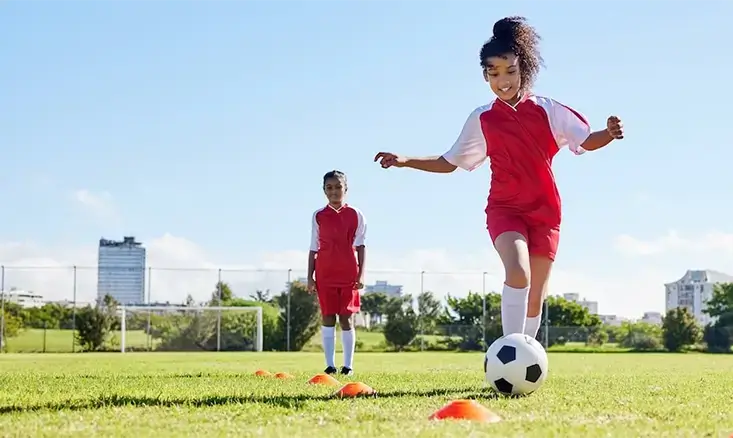
Conclusion
Agility drills are essential for youth soccer players at all levels. By following a proper agility training plan at CRFC Soccer Summer Camps, youth soccer players can develop the quickness and control needed to excel.
FAQs
Why are agility drills important for youth soccer players?
Agility drills help young players improve footwork, speed, and balance, making them quicker and more controlled on the field.
What are the best agility drills for soccer players?
Agility ladder drills, zig-zag cone drills, and reaction-based exercises like the partner shadow drill help players develop quick feet and sharp reflexes.
At what age should soccer players start agility training?
Kids as young as U5 can start with basic movement drills, while older players (U9-U19) can progress to advanced agility exercises.
How do agility drills prevent injuries in soccer?
Agility training strengthens muscles, joints, and ligaments, teaching proper movement techniques that reduce the risk of sprains and falls.
How often should youth soccer players do agility drills?
Players should practice agility drills 2-3 times a week to build speed, coordination, and reaction time without overtraining.

Did you find this useful?


